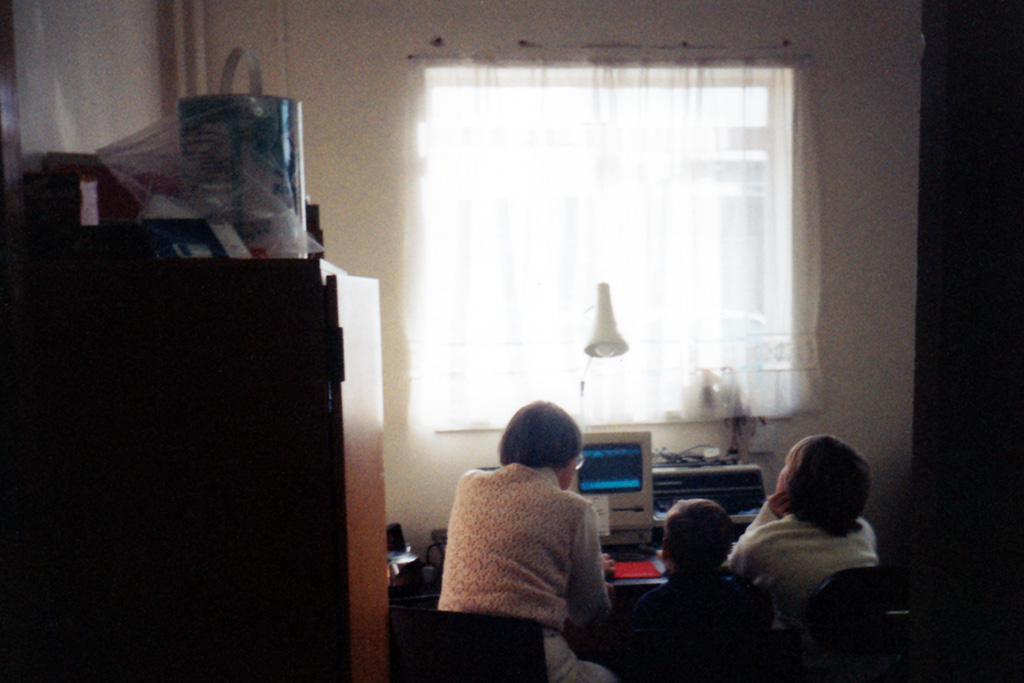
1991
Dracula Educational Software
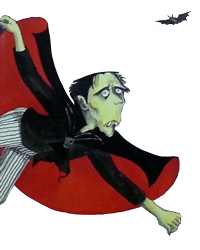
During my sixth form I created educational software using Apple's HyperCard,
working with Redbridge's Special Educational Needs Support Service (SENSS).
This helped support students with 'educational and behavioural difficulties'
who often struggled in class, and were slow learning how to read and write.
Many of these students were very bright and creative,
but for many reasons struggled with learning in a classroom environment.
Joan Kennedy of SENSS provided one-to-one support for an hour or so a week.
After initial discussions, analysis and experimentation with Joan,
and generous access to my teacher Roger Snook's Mac Classic
we created a digital version of a book already popular with the students.
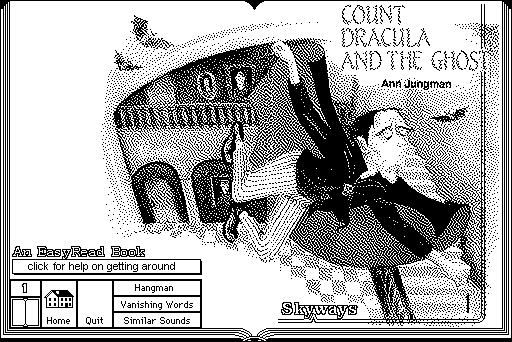
to the story and artwork of Ann Jungman's book, Count Dracula and the Ghost.
The students particularly loved the somewhat rickety and unpredictable voice synthesis
and being hands on with what was still a rarely seen - let alone touched - grown-up tool.
Close observation of the software in use suggested improvements,
and the resulting product was highly tailored.
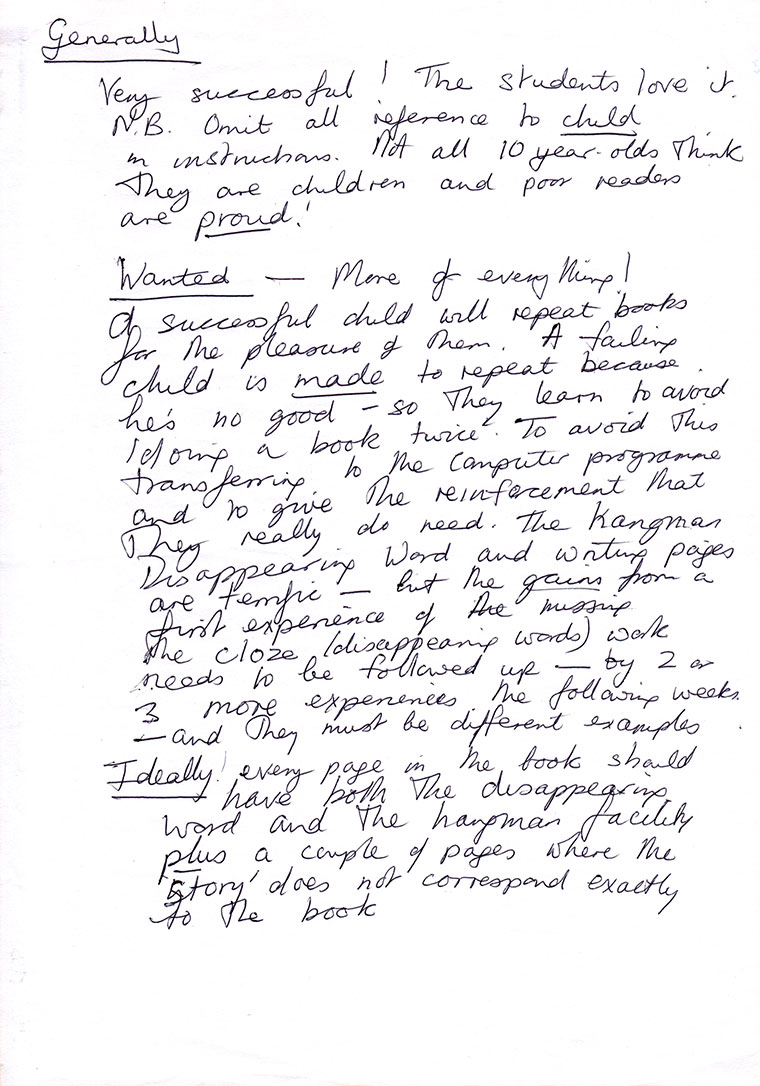
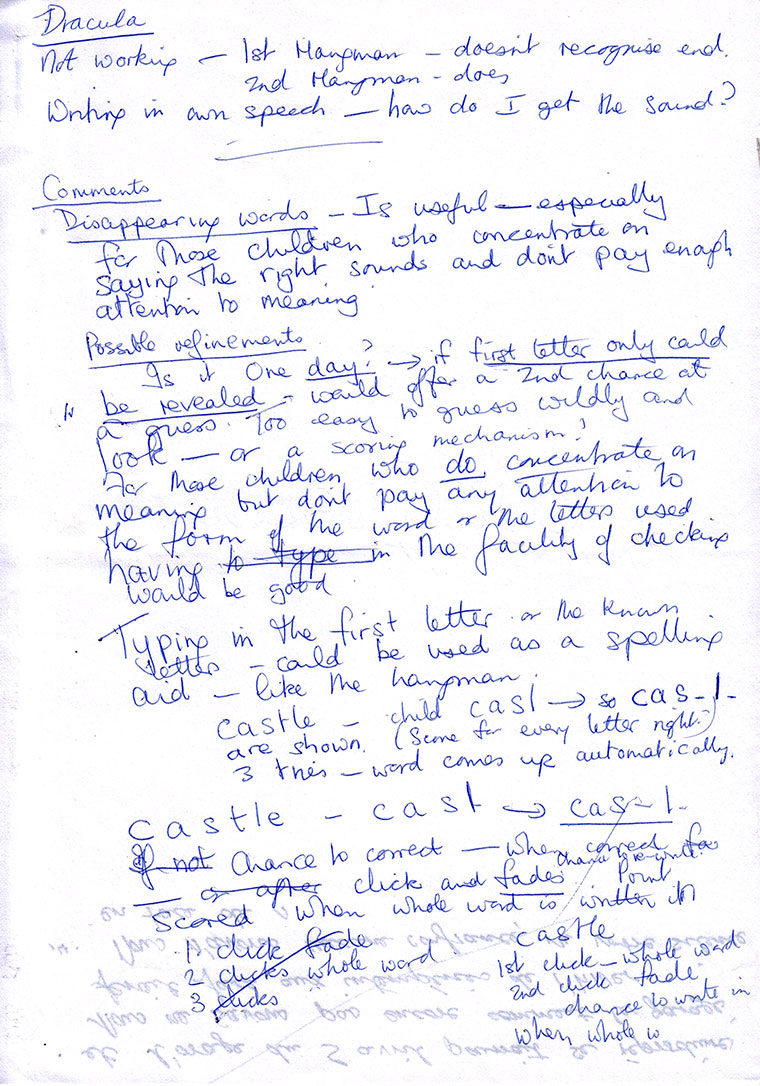
Together we must have seemed like a strange team!
Joan often struggled with a mouse, waving it around in the air at the screen -
but she was very clear on what helped the students, and what was distracting.
I would grab time in breaks to work on the software, and sometimes lug the Classic
(at 7.3kg/16lbs by no means a portable) home over weekends to carry on work.
The updated stacks were then transferred to Joan's computer on a 3.5" floppy disk
(for anyone under 25, these were 3.54" rigid plastic squares, high density=1.44mB)
Together we figured out the basics of what is now called User Experience design (UX).
Good results depended more on careful, iterative development,
and close observation of the actual use of a system.
These new tools proved very successful.
Some of the most uncooperative students wrote their own stories
and, in many cases, their own HyperCard 'stacks', within a few months!
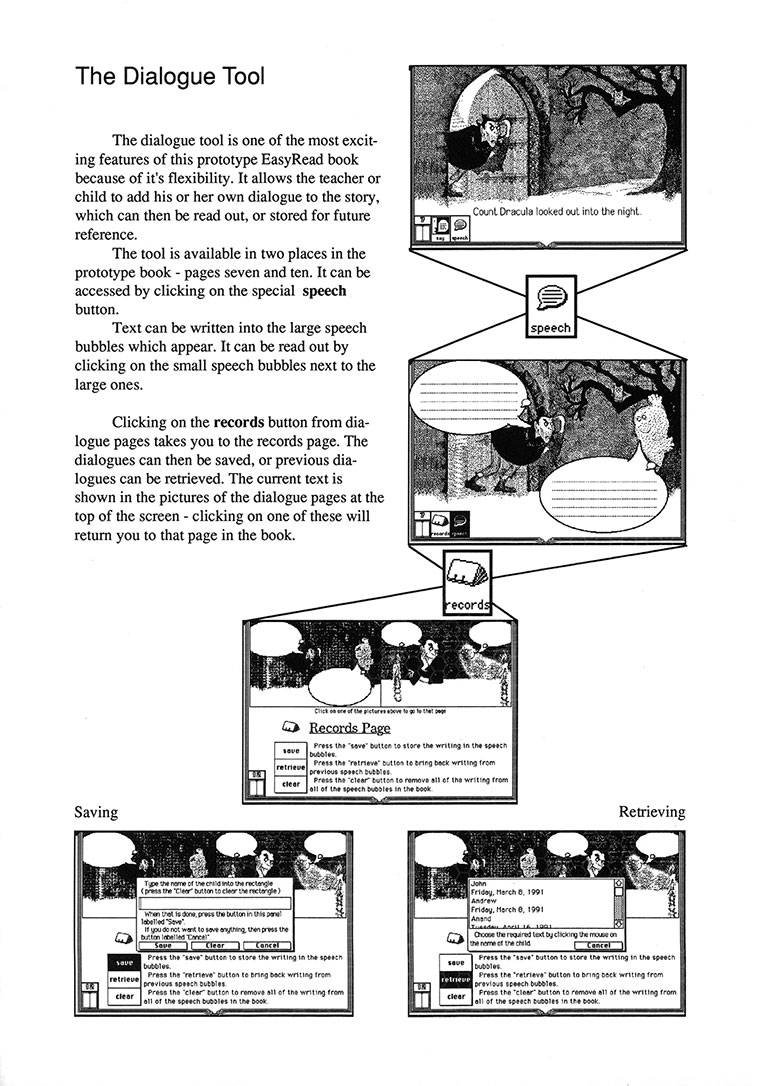
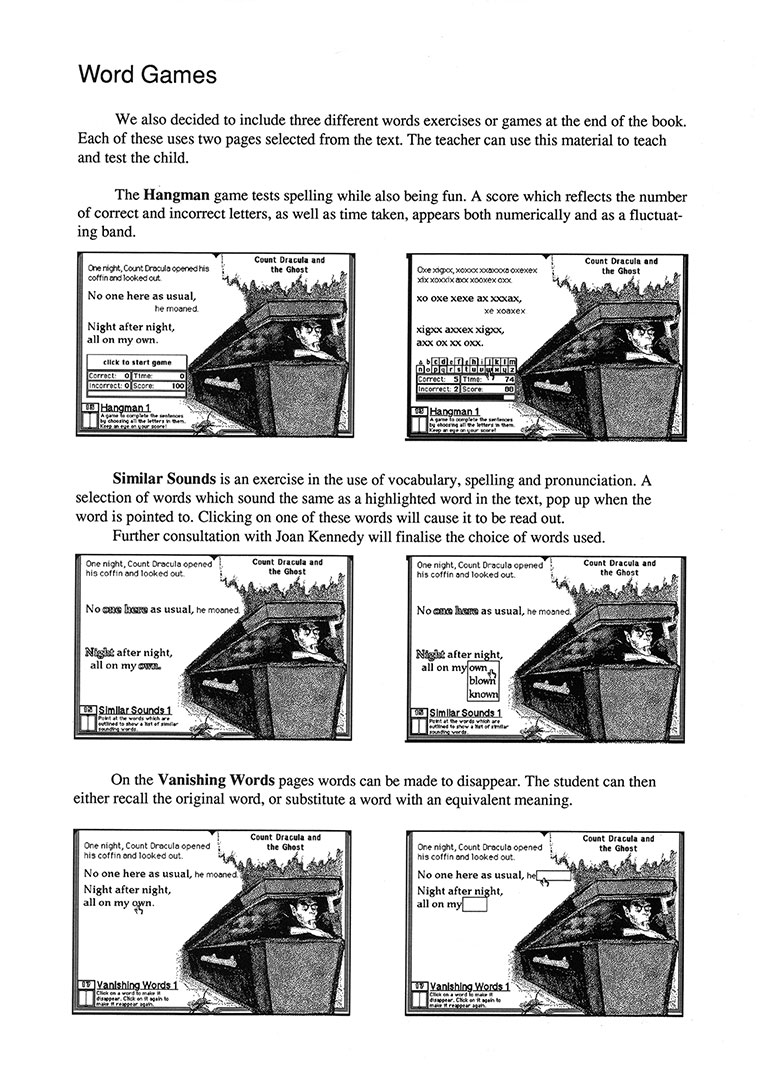
students loved making up dialogue and then hear Dracula and the wheezy Ghost say it out loud
(especially if it was rude, or the computer pronounced words appalling badly)
A Mac Classic was loaned to the project, which continued after I left London for university.
It evenutally ended after three years for lack of resources, and the loaned computer was returned.
I believe the SENSS unit was shut down soon afterwards, and I lost touch with Joan.
Apple controversially killed HyperCard despite it's popularity - a vital ancestor of the
internet.
Apple itself almost collapsed, and I didn't use a Mac again for nearly two decades.
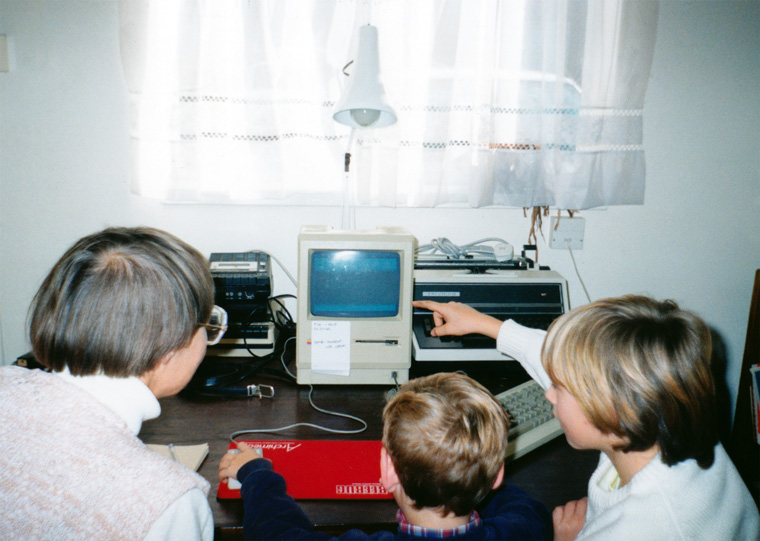
I learned several key lessons from this work which have stayed with me:
Basic equipment can achieve a lot - what mattered wasn't the technology, but how it was used.
Modern phones are more powerful today than supercomputers were in the 1990's,
yet as a society, we are still completely clueless about how to make use of this abundance.
Working in collaboration on something meaningful is extremely rare, challenging and satisfying.
I've since worked as a consultant to the United Nations agencies and the European Commission,
crowdsourced emergency responses, NGOs, commercial companies and canny private investors -
yet I have rarely felt as productive working in partnership as I did then with Joan and Roger.
Learning can, and should, be fun. It is a tragedy that most learning is not.
I was very lucky to go to a free Grammar School, and have several very supportive teachers.
I had already taught myself to learn, and to enjoy learning, and generally thrived academically.
(Driving everyone else bananas along the way with my constant questions - sorry, sorry, sorry...)
Most people are not so fortunate - and that is a tragedy for us all - every single one of us.
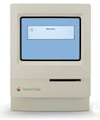
 my thanks
my thanks
to author Ann Jungman
and illustrator Doffy Weir
for their permission to use aspects
of their published work here
and both Roger and Joan
for our work together
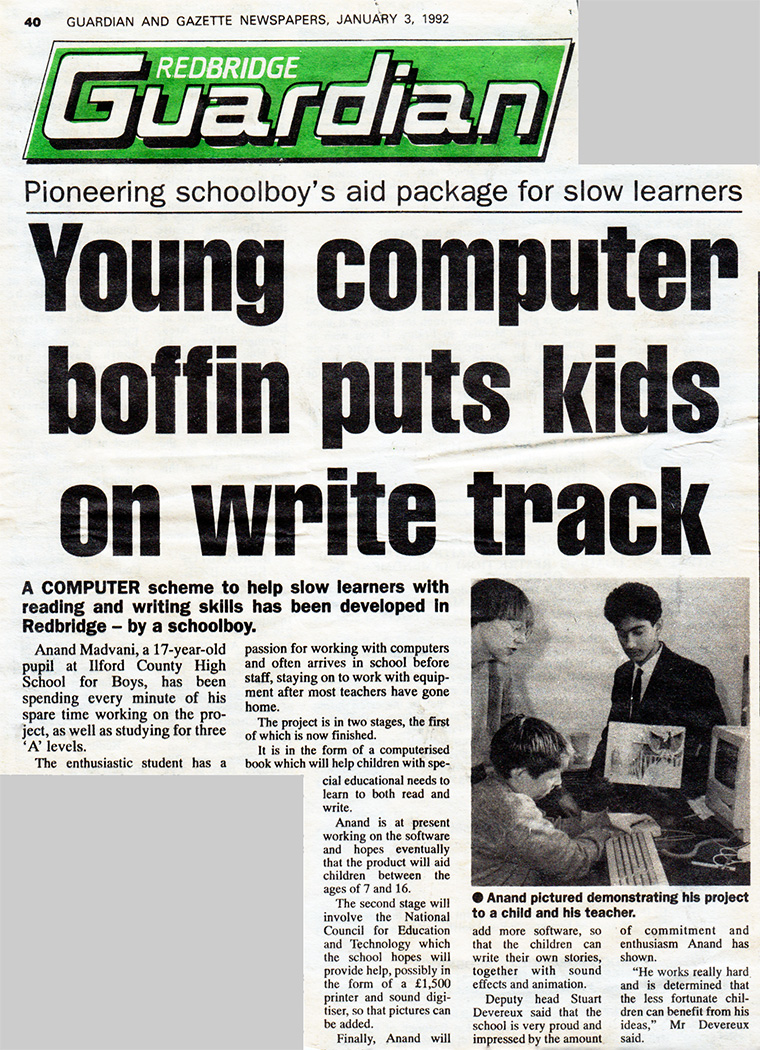
 ⥤
⥤